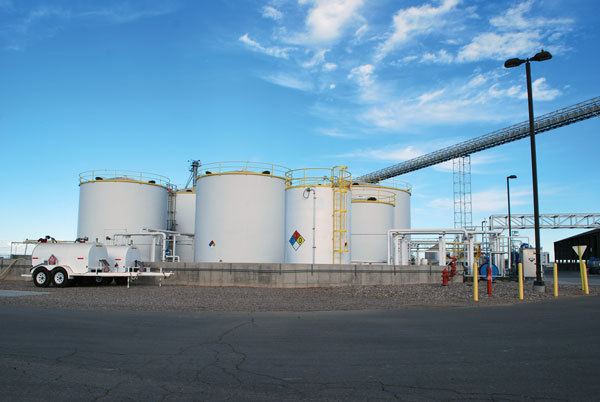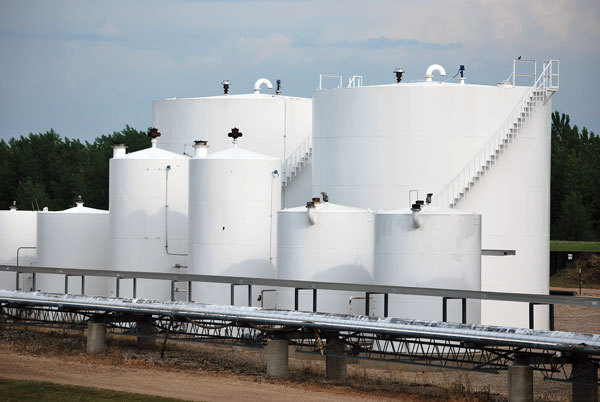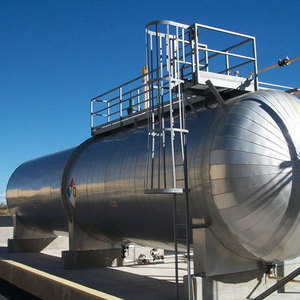Understanding API tank requirements




SOURCE: PITTSBURG TANK & TOWER
June 14, 2017
BY Cassandra Thomason
Every 3,000 miles, the car goes into the shop for an oil change and tire rotation. At the biannual teeth cleaning visit with the dentist, X-rays or fillings may be called for. Parental worries that inevitably set in once a newborn goes home from the hospital will be soothed by the confident words of her pediatrician at the first of many scheduled wellness exams.
These checkups are all preventative procedures designed to catch a problem before it becomes more dangerous or expensive, or to pinpoint the cause of a malfunction.
Ethanol storage tanks require such inspections to find points of weakness in a tank that could lead to leaks. Leaks that go unnoticed are dangerous and can lead to expensive cleanups and repairs.
Rules for Inspection
Unlike regularly scheduled physicals or dentist appointments, inspection intervals followed for ethanol tanks are not always clear cut. Steel tanks that hold oil are built to standards set forth by the American Petroleum Institute—API 653. The objective of these standards is to prolong the functional life of oil storage tanks and to ensure the safety of people and communities surrounding the tanks.
API 653 covers the maintenance, inspection, alteration and repair of steel, field-erected aboveground storage tanks built to API 650 or API 12C standards. This standard contains the minimum requirements for ensuring the integrity of such tanks. When having an API tank inspection, it is paramount to hire a reputable tank company that offers certified API 653 inspections for bulk storage, petroleum and chemical storage tanks. API 653 inspections must be performed by a licensed API 653 inspector. These inspectors have completed the strenuous API 653 certification program, preparing them to provide thorough, code-specific tank inspections.
Inspection Types
Ethanol producers are well-educated in the potential risks of ethanol storage and do not take the subject lightly. The safety of their employees and continued production are necessary for business. API 653 inspection requirements can get tricky. There are three mandatory API 653 inspections—the monthly visual, in-service, and out-of-service API 653 inspections are separate inspections with separate intervals. While ensuring that all three of these types of inspections are completed and repeated throughout the tank’s life is the responsibility of the tank owner, only the visual inspection can be performed in-house by a noncertified inspector. The in-service and out-of-service inspections are a different story.
In-service inspections should be done every five years at the least by a certified API 653 inspector. More frequent inspections might be mandated depending on several factors, including but not limited to, the nature of the product stored, corrosion of tank materials, location of tank, along with jurisdictional requirements. The in-service API 653 inspections should not be confused with the recommended routine monthly visual inspections performed by the owner’s personnel, which are also done without taking the tank out of service. The monthly inspections do not need to be done by a certified API 653 inspector, but are still important to monitor the structural integrity of the tank.
Out-of-service inspection intervals must be calculated using the risk-based inspection assessment or corrosion rate procedures. These inspections require the tank to be completely emptied and cleaned in order for the API 653 certified inspector to visually inspect the floor plates and lower tank shell courses. As with in-service inspections, more frequent inspections might be needed depending on the condition of the tank and what materials are being stored.
The certified tank company providing the inspection is required to produce a detailed report for each tank inspected for both in-service and out-of-service inspections. These reports include a list of components inspected and conditions found, methods and tests used. Tests may include visual, ultrasonic, liquid penetrant, penetrating oil, magnetic particle, radiography, magnetic flux scan, vacuum box or tracer gas. The report also includes infographic data, photographs and all recommendations for repairs and monitoring necessary to comply with API 653.
Following Through
After the inspections are complete and reports are received, the preventative care work isn’t complete. Those recommendations for repairs are not mandatory, but they should be taken seriously and with action to remedy in a timely fashion.
Imagine this. A patient shows his doctor a mole on his back. The doctor inspects it and sends a sample to the lab for testing. When the results come in, the doctor informs the patient that his mole is malignant and could spread to other parts of his body. He suggests a procedure that would remove the mole and eliminate the potential of the cancer spreading. The patient takes the paper with the results, thanks the doctor, and leaves the room. He goes home, puts the test results in his desk drawer, and doesn’t give them another thought. His doctor has the solution to his health problem, but the patient takes no action to remove the life-threatening mole. He takes his chances with the flaw that might cost him his life.
Not addressing recommendations on API 653 tank inspection reports is risky business. A similar warning was given to Freedom Industries following an inspection completed by a certified corrosion engineer in 2013 on their tank. According to an article in Capitol Research published by The Council of State Governments, “West Virginia Chemical Spill Could Lead to Changes Nationwide,” the report read that the tank had been “maintained to some structural adequacy but not necessarily in full compliance with API 653 or EPA standards.” A 1-inch hole was found in the storage tank.
Less than a year later, that tank leaked 7,500 gallons of chemicals into the Elk River. The 300,000 citizens reliant on the municipal water system of Charleston, West Virginia, went without safe, running water for three days. Aside from being a monumental inconvenience to the community, the financial repercussions for the company were devastating. Freedom Industries filed for bankruptcy after the spill.
The chemical released in the Freedom Industries tank spill was MCHM (4-methylcyclohexanemethanol), which is not flammable. A flammable liquid leak, like ethanol, of this magnitude could have been much more catastrophic. Fires and explosions from flammable chemical leaks have the potential to seriously injure those people near the occurrence, as well as destroy the tank, the building it is in or near, and any other object nearby.
As ignoring the doctor’s advice is irresponsible for one’s personal health, ignoring the recommendations of an API 653 inspection report is disregarding the safety of every living being that comes into close proximity of that tank with structural weaknesses. Being vigilant with maintaining the integrity of tanks holding ethanol is not a recommendation. It’s a standard that all API tank owners must abide by.
A quality storage tank should last for decades if it undergoes timely inspections and proper maintenance, as a car should run longer with consistent intervals of tune ups. Certified API 653 inspectors have the trained eye to identify issues with oil storage tanks and guide owners in the right direction to fix faults. Putting off these inspections is a gamble ethanol manufacturers shouldn’t be willing to take. Ignoring repair recommendations of an API 653 inspection report is even more of a gamble. Inspect it. Repair it. It’s the doctor’s orders.
Author: Cassandra Thomason
Director of Research
Pittsburg Tank & Tower Group
270-869-9400
cthomason@pttg.com
Advertisement
Advertisement
Advertisement
Advertisement
Related Stories
Saipem has been awarded an EPC contract by Enilive for the expansion of the company’s biorefinery in Porto Marghera, near Venice. The project will boost total nameplate capacity and enable the production of SAF.
Global digital shipbuilder Incat Crowther announced on June 11 the company has been commissioned by Los Angeles operator Catalina Express to design a new low-emission, renewable diesel-powered passenger ferry.
International Air Transport Association has announced the release of the Sustainable Aviation Fuel (SAF) Matchmaker platform, to facilitate SAF procurement between airlines and SAF producers by matching requests for SAF supply with offers.
Alfanar on June 20 officially opened its new office in London, further reaffirming its continued investment in the U.K. The company is developing Lighthouse Green Fuels, a U.K.-based SAF project that is expected to be complete in 2029.
ATR and French SAF aggregator ATOBA Energy on June 19 signed a memorandum of understanding (MOU) to explore ways to facilitate and accelerate sustainable aviation fuel (SAF) adoption for ATR operators.
Upcoming Events










